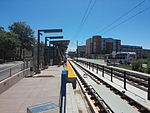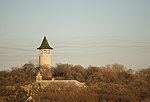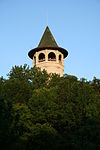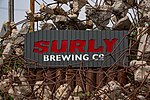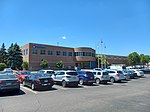Hubbard Broadcasting
1926 establishments in MinnesotaCompanies based in Saint Paul, MinnesotaHubbard BroadcastingMass media companies established in 1926Radio broadcasting companies of the United States ... and 3 more
Radio in MinnesotaTelevision broadcasting companies of the United StatesTelevision in Minnesota
Hubbard Broadcasting, Inc. is an American television and radio broadcasting corporation based in St. Paul, Minnesota. It was founded by Stanley E. Hubbard. The corporation has broadcast outlets scattered across Minnesota, Wisconsin, Missouri, Illinois, Ohio, New York, Texas, New Mexico, Arizona, Washington, Florida, and Washington, D.C. KSTP radio, KSTP-FM and KSTP-TV, which serve the Twin Cities region of Minnesota and western Wisconsin, are regarded as the company's legacy flagship stations.
Excerpt from the Wikipedia article Hubbard Broadcasting (License: CC BY-SA 3.0, Authors).Hubbard Broadcasting
University Avenue West, Saint Paul Saint Anthony Park
Geographical coordinates (GPS) Address Phone number Website Nearby Places Show on map
Geographical coordinates (GPS)
| Latitude | Longitude |
|---|---|
| N 44.968055555556 ° | E -93.206944444444 ° |
Address
KTMY
University Avenue West 3415
55114 Saint Paul, Saint Anthony Park
Minnesota, United States
Open on Google Maps

